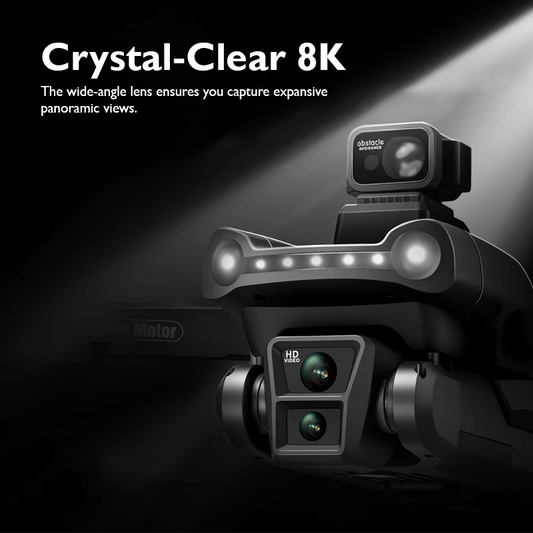The Challenges of Long Exposure Photography with Drones

Long exposure photography has long been revered for its ability to capture stunning, ethereal images. When coupled with the soaring perspectives offered by drones, it opens up a whole new realm of creative possibilities. However, mastering long exposure photography with drones isn't without its challenges. In this article, we'll delve into the intricacies of this unique art form, exploring the obstacles photographers face and offering tips to overcome them.
Understanding Long Exposure Photography with Drones:

Long exposure photography involves capturing a stationary scene over an extended period, typically seconds or even minutes. This technique allows for the blurring of motion, resulting in mesmerizing effects like smooth waterfalls, streaking car lights, or dreamy cloudscapes.
Integrating drones into the equation adds complexity and requires a nuanced approach. Unlike traditional long exposure setups, drones are constantly in motion, which can introduce unwanted vibrations or blur into the image. Additionally, factors like wind and battery life must be carefully managed to achieve desired results.
Challenges of Long Exposure Photography with Drones:

a. Stability and Vibration: One of the primary challenges when attempting long exposure shots with drones is maintaining stability. Even the slightest movements or vibrations can compromise image sharpness. Windy conditions exacerbate this issue, as drones struggle to remain steady.
b. Battery Life: Long exposure shots require extended flight times, draining the drone's battery more rapidly than usual. This limitation restricts the amount of time available to capture the perfect shot and necessitates careful planning to optimize battery usage.
c. Exposure Settings: Achieving proper exposure is crucial in long exposure photography. However, drones' automatic exposure settings may not always produce the desired results, especially in low light conditions. Manual adjustments are often necessary to fine-tune exposure settings and ensure optimal image quality.
d. Motion Blur: Drones are inherently mobile platforms, making it challenging to eliminate motion blur entirely. Even with careful planning and stabilization techniques, subtle movements can still impact the clarity of long exposure shots.
Overcoming the Challenges:

a. Invest in Quality Equipment:
Choosing a drone with advanced stabilization features, such as gimbal technology, can significantly reduce vibrations and improve image stability. Additionally, opt for drones with longer battery life to extend shooting windows.
b. Use ND Filters:

Neutral density (ND) filters are indispensable tools in long exposure photography, helping to control exposure by reducing the amount of light entering the camera lens. Experimenting with different ND filter strengths allows for greater flexibility in varying lighting conditions.
c. Manual Mode:
Take control of your drone's camera settings by switching to manual mode. This allows for precise adjustments to shutter speed, aperture, and ISO, ensuring optimal exposure for long exposure shots.
d. Plan and Practice:
Before embarking on a long exposure drone shoot, thoroughly plan your location, timing, and composition. Scout the area beforehand to identify potential obstacles or hazards. Practice flying your drone in various conditions to hone your skills and familiarize yourself with its capabilities.
e. Stabilization Techniques:
Implement stabilization techniques such as tripod mode (if available on your drone), which minimizes movements and vibrations during flight. Additionally, consider using a landing pad or flat surface to launch and land your drone, further reducing the risk of unwanted motion blur.
f. Post-Processing:

Leverage post-processing software like Adobe Lightroom or Photoshop to fine-tune your long exposure drone shots. Adjustments to exposure, contrast, and sharpness can help enhance the final image and mitigate any remaining imperfections.
Long exposure photography with drones presents a unique set of challenges, but with careful planning, practice, and the right techniques, stunning results are within reach. By investing in quality equipment, mastering manual camera settings, and employing stabilization techniques, photographers can overcome obstacles and unlock the full creative potential of this captivating art form. So, next time you take to the skies with your drone, embrace the challenges of long exposure photography and elevate your aerial imagery to new heights.
Explore a variety of drones at our online drone store.Happy Flying!











